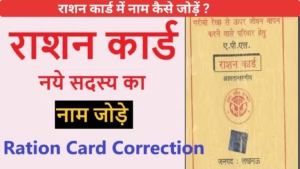The Post Office Fixed Deposit (POFD) is among the most reliable investment instruments available in India. Backed by the Government of India, it ensures safety of capital and guaranteed returns, making it an attractive option for conservative investors, retirees, and individuals seeking assured income.
However, financial emergencies can arise unexpectedly, forcing investors to withdraw their funds before maturity. This process is called premature closure, and while it provides liquidity, it comes with certain rules and charges. Understanding these regulations is crucial for making informed financial decisions.
This article provides a comprehensive guide to the premature closure rules of Post Office Fixed Deposits, including charges, penalties, eligibility conditions, examples, and best practices.
What is Post Office Fixed Deposit (POFD)?
The POFD works similarly to bank fixed deposits. An investor deposits a lump sum for a fixed tenure and earns guaranteed interest at a pre-determined rate.
Key Features
- Tenure Options: 1 year, 2 years, 3 years, and 5 years.
- Minimum Deposit: ₹1,000 (multiples of ₹100 thereafter).
- No Maximum Limit: Investors can deposit any amount.
- Interest Rate (2025): Ranges from 6.9% to 7.5%, depending on tenure (subject to quarterly revisions).
- Tax Benefits: Only the 5-year FD qualifies for deduction under Section 80C of the Income Tax Act.
Rules for Premature Closure of Post Office FD
The Post Office permits premature closure under strict rules:
- Minimum Lock-in Period
- No premature closure is allowed before 6 months from the date of deposit.
- Withdrawal Between 6 Months and 12 Months
- If closed during this period, the depositor will not receive FD interest.
- Instead, they will earn interest at the Post Office Savings Account rate (around 4% per annum).
- Withdrawal After 1 Year but Before Maturity
- If closed after one year, the interest will be paid at the applicable FD rate minus 1% penalty.
Premature Closure Charges Explained
Unlike banks that levy fixed penalty fees, the Post Office deducts charges indirectly through reduced interest rates.
- Before 6 months → No interest is paid; only principal amount is returned.
- 6 months – 12 months → Interest is recalculated at the Savings Account rate (approx. 4%).
- After 1 year but before maturity → FD interest applicable for the tenure completed, but 1% lower.
Case Study Example
Suppose Mr. Sharma invests ₹5,00,000 in a 3-year Post Office FD at 7% per annum.
- If he closes after 8 months → He receives only 4% interest (Savings A/c rate).
- If he closes after 2 years → He receives 6% interest (7% – 1%).
- If he holds full term (3 years) → He receives the full 7% interest.
This demonstrates how premature closure reduces returns significantly.
How to Apply for Premature Closure
Offline Method (Post Office Branch)
- Visit the Post Office where the FD was opened.
- Fill in the Premature Closure Application Form.
- Submit FD certificate/passbook, identity proof, and linked savings account details.
- The principal plus reduced interest will be credited to the linked savings account or paid via cheque.
Online Method (Through IPPB App)
- If the FD is linked with an India Post Payments Bank (IPPB) account, premature closure requests can be submitted online.
- The amount is transferred directly to the savings account.
Documents Required
- FD certificate or passbook.
- Premature closure form.
- Identity proof (Aadhaar, PAN, Voter ID, Passport).
- Linked Post Office savings account details.
Impact of Premature Closure
Premature withdrawal should be a last resort due to the financial disadvantages:
- Loss of Interest: Reduced interest rate leads to lower returns.
- Loss of Tax Benefits: Closing a 5-year FD before maturity nullifies eligibility for Section 80C deduction.
- Opportunity Cost: Investors may lose out on higher returns compared to holding till maturity.
Alternatives to Premature Closure
- Loan Against FD
- Instead of breaking the FD, some banks and financial institutions allow loans against FD. While the Post Office does not directly provide this facility, transferring funds into a bank FD with loan provision is an option.
- Partial Withdrawal from Other Investments
- Liquidating mutual funds, recurring deposits, or small savings may be preferable instead of breaking a high-value FD.
- Emergency Funds
- Maintaining a separate liquid savings account can help avoid premature closure in the future.
Comparison: Post Office FD vs Bank FD in Premature Closure
| Feature | Post Office FD | Bank FD (General) |
|---|---|---|
| Minimum Lock-in Period | 6 months | 7 days – 1 month |
| Penalty | 1% lower interest rate | 0.5% – 1% lower interest rate |
| Before 6 months | Only principal, no FD interest | Savings interest / Nil |
| Section 80C Tax Benefit | Only 5-year FD | Only 5-year FD |
FAQs
1. Can I close my Post Office FD before 6 months?
No. Premature closure is not permitted before completing six months.
2. What happens if I close my FD after 9 months?
You will receive interest at the Savings Account rate (approx. 4%), not the FD rate.
3. How much is the penalty after 2 years in a 5-year FD?
You will receive the 2-year FD rate applicable at the time of deposit, minus 1% penalty.
4. Is premature closure possible online?
Yes, if your FD is linked with an IPPB account, closure can be initiated online.
5. Do I lose Section 80C benefits if I close my 5-year FD early?
Yes, premature closure disqualifies you from tax benefits.
Conclusion
The Post Office Fixed Deposit Scheme offers safe, government-backed investment options with assured returns. However, premature closure leads to loss of interest and tax benefits, which can significantly reduce earnings.
Investors should treat premature closure only as a last resort during emergencies. Whenever possible, consider alternatives such as loans against FD or maintaining an emergency fund. For those seeking both safety and flexibility, understanding the rules and charges of premature closure is essential before investing.
By carefully planning finances and being aware of penalties, investors can make the most of the Post Office Fixed Deposit scheme while ensuring liquidity in times of need.
Disclaimer:
This article is for informational purposes only. Rules and charges related to Post Office Fixed Deposit premature closure may change as per government notifications. Please verify the latest details from the official India Post website or consult your nearest Post Office before making any financial decisions.







